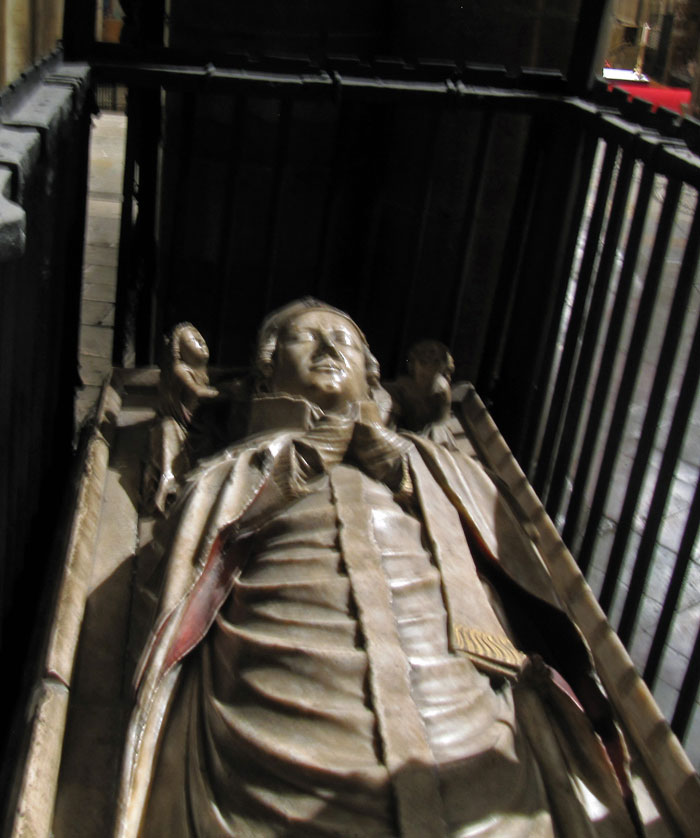Archbishop of Canterbury (1381–1396)
The will of Archbishop Courtenay gave directions for his funeral and for his body to be buried in Exeter Cathedral where he had once been a Prebendary and where his mother and father had been buried. While lying on his deathbed at the Archbishop’s Palace in Maidstone, Courtenay had a change of mind and declared he wanted to be buried in the graveyard of the nearby collegiate church. Upon his death his body was instead conveyed to Canterbury Cathedral, where he was interred 5 days later, possibly at the direction of Richard II. His tomb was given an honorary position to the south of Becket’s shrine and at the feet of the Black Prince, Richard’s father.
Courtenay’s tomb and effigy are constructed from alabaster. The tomb provides for figurework in the ogee arched canopied recesses, the figures now sadly missing. The effigy depicts Courtnay dressed in his robes, with mitre and crosier. His face is composed and hands (now missing) together in prayer. The alabaster carving is of the highest quality. Christopher Wilson considers the tomb to have been constructed by a London workshop rather than the alabasters of Chellaston in Derbyshire. The late Archbishop’s pillow is supported by angels and at his feet is a splendid alabaster dog.
The effigy lies upon a single grey slab of several centimetres thickness of what is referred to in various texts as Purbeck Marble. However, there are insufficient freshwater snail shells of the genus Viviparus to identify it as Purbeck Marble. The stone is a fossiliferous limestone and takes a good polish. It may therefore be a slab of stone from one of the adjacent Purbeck beds loosely grouped together as Purbeck Limestone.

